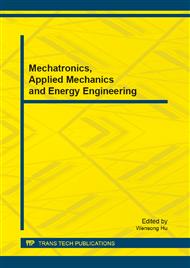[1]
Liszka T, Orkisz J. The finite difference method at arbitrary irregular grids and its application in applied mechanics. Computers and Structures 1980; 11: 83-95.
DOI: 10.1016/0045-7949(80)90149-2
Google Scholar
[2]
Batina JT. A gridless Euler/Navier-Stokes solution algorithm for complex two-dimensional applications. NASA-TM-107631, June (1992).
DOI: 10.2514/6.1993-333
Google Scholar
[3]
Sridar D, Balakrishnan N. An upwind finite difference scheme for meshless solver. Journal of Computational Physics 2003; 189: 1-29.
DOI: 10.1016/s0021-9991(03)00197-9
Google Scholar
[4]
Liou MS. A sequel to AUSM, Part Ⅱ: AUSM+-up for all speeds. Journal of Computational Physics 2006, 214: 137-170.
DOI: 10.1016/j.jcp.2005.09.020
Google Scholar
[5]
X.W. Cai, J.J. Tan and X.J. Ma. A 2D meshless solver based on AUSM+ and MUSCL scheme[J]. Applied Mechanics and Materials, Vols. 105-107 (2012) 2140-2143.
DOI: 10.4028/www.scientific.net/amm.105-107.2140
Google Scholar
[6]
G. May and A. Jameson. Unstructured Algorithm for Inviscid and Viscous Flows Embedded in a Unified Solver Architecture: Flo3xx[R], AIAA Paper 2005-0318.
DOI: 10.2514/6.2005-318
Google Scholar
[7]
C. Norberg. Effects of Reynolds number and low-intensity free-stream turbulence on the flow around a circular cylinder, Department of Applied Thermoscience and Fluid Mechanics, No. 87/2, (1987).
Google Scholar
[8]
Ong. L and Wallace. J. The velocity field of the turbulent very near wake of a circular cylinder, Exp. Fluids, 20, 1996, 441-453.
DOI: 10.1007/bf00189383
Google Scholar
[9]
Kravchenko, A.G. and Moin, P. Numerical studies of flow over a circular cylinder at ReD=3900. Physics of Fluids, Vol. 12, No. 2, 2000, pp.403-417.
DOI: 10.1063/1.870318
Google Scholar
[10]
J. Franke and W. Frank. Large eddy simulation of the flow past a circular cylinder at ReD=3900[J]. Journal of Wind Engineering and Industrial Aerodynamics. 90(2002) 1191–1206.
DOI: 10.1016/s0167-6105(02)00232-5
Google Scholar
[11]
M. BREUER. Large Eddy Simulation of The Subcritical Flow Past A Circular Cylinder: Numerical And Modeling Aspects. Int. J. Numer. Meth. Fluids 28: 1281–1302 (1998).
DOI: 10.1002/(sici)1097-0363(19981215)28:9<1281::aid-fld759>3.0.co;2-#
Google Scholar
[12]
Lourenco, L. M. and Shih, C. Characteristics of the plane turbulent near wake of a circular cylinder, A particle image velocimetry study, Private Communication, 1993 (data taken from Reference.
Google Scholar


